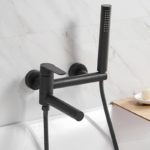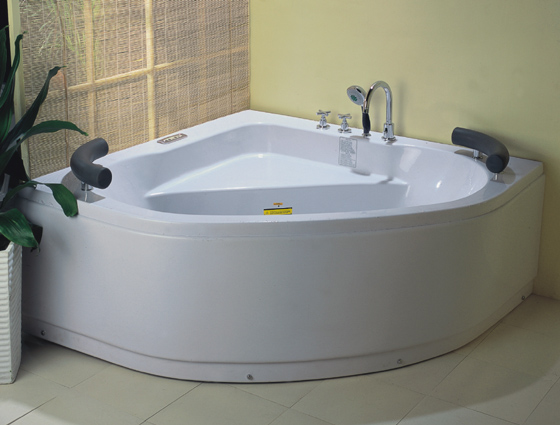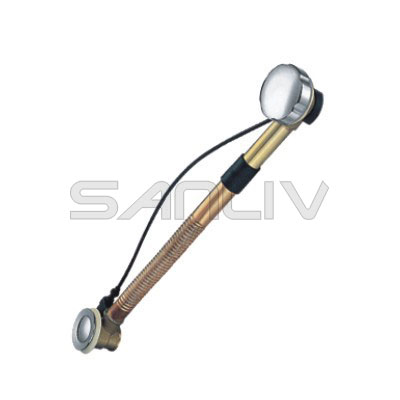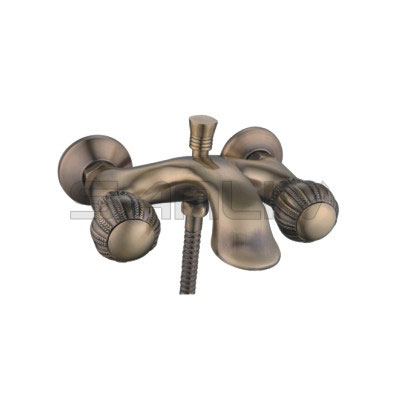There are many types of bathtub faucets to please anyone’s taste and style. Bathtub faucet installation can be a straightforward procedure that anyone with a good DIY attitude can accomplish. However, the first task is to decide which type of faucet will fit your bathtub, then what style of faucet you want.

Faucet Access Points
You will be well advised not to buy the faucets ahead of buying the bathtub itself. Walking around a plumber or builders merchants it can be tempting to buy faucets just because they look really stylish, before you’ve even looked at the bathtubs themselves.
Unfortunately some bathtubs might not give the access point options you’ll need to actually fit the faucet in to the bathtub. (Here the access point is the location on the top of the bathtub that the faucet will fit into.) It is vital that you first establish how many access points in the bathtub you’ll have to fit the faucets into; and then you can decide which faucets to buy.
Types of Bathtub Faucet
You can buy faucets in a wide variety of designs. You’ll have choices of chrome, brass, silver and gold finishes; ones that look old-fashioned or contemporary, highly stylized or plain. However, the actual types of faucet are as explained below:
Single hole faucet- these are the standard ‘pillar’ types of faucet, where you’ll have separate ones to deliver the hot and cold water into the bathtub. Therefore, single hole faucets require two access points in the bath tub.
Two hole mixer faucet – the two separate hot and cold water access points feed into a single faucet body, allowing the hot and cold water to mix prior to delivery into the bathtub. So again two access points are required. You can often get bathtub two hole mixer faucets with a shower attachment, that is operated by a valve inside the faucet body. However, unless you have problems fitting a separate electric shower unit, mixer faucets rarely deliver a satisfactory pressure of water to shower properly under them.
Three hole mixer faucet – works exactly the same way as a two hole mixer faucet but is generally more stylish. The reason for this is a two hole mixer has a ‘faucet body’ on top of the bathtub where the mixing takes place. In a three hole mixer the mixing is done underneath the bathtub and the mixed water is delivered through a spout that rises out of a third access point between the hot and cold faucets.
Wall mounted faucets – this system would require you to buy a bathtub without any access points as the faucets and spout pipe-work are routed behind a cavity in a wall, the faucets are then connected to the pipe-work on the wall and the spout pours the water downwards from the wall.
There is another type of faucet system known as a ‘monobloc mixer’. These usually require only one access point but are more commonly used in kitchens and utility areas.
Connecting to the Water Supply
We’ll presume that for a new bathtub any hot and cold water supply plumbing is in place and that the hot and cold water delivery valves are shut-off. If you’re fitting replacement faucets, having shut-off the valves open the faucets to drain any water then remove them from their fittings.
If you are removing the old faucet, as you disassemble it, save all loose parts, you may need them for re-assembly, especially if you are not replacing the tub-shower diverter valve. (The valve that switches the water from the tub faucet to the shower head.) Line them up in the sequence you removed them in order to remember how they went together. Clean the holes left by the old faucet of rust, dirt, soap scum and grime.
The following operation then can then be carried out for each of the water delivery pipes to the faucet fittings. Around the thread of the faucet apply some PTFE tape to ensure a thoroughly tight seal. Locate the faucet on top of its seal and into its access point, secure it into place with the washer and back-nut provided. Finally, use the connecting nut to secure the faucet fitting to the flexible water supply pipe. Don’t forget to turn the water supply back on.








